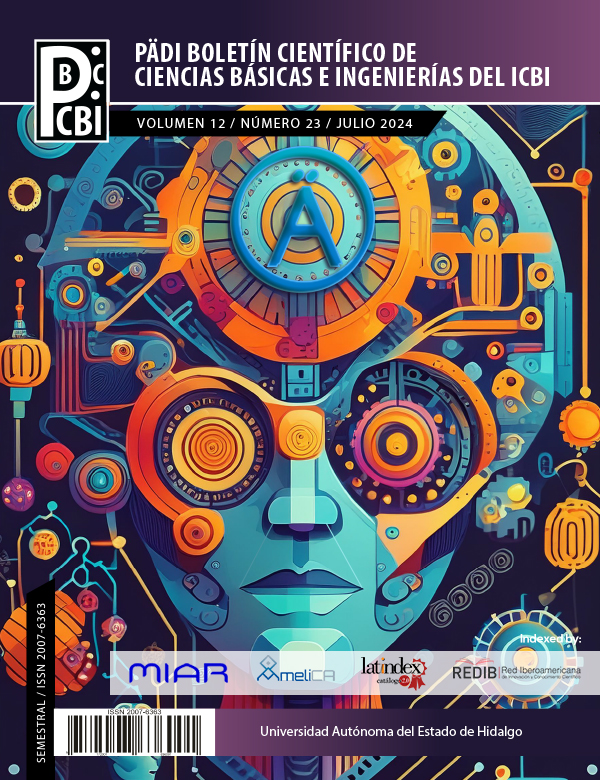Natural capital and production in the mexican country
Abstract
There is a problem that runs through many countries today and is expected to worsen in the coming years. And it is that of food. In some countries the situation is already serious and puts their sovereignty and independence at risk due to their vulnerability. Action must be taken on all fronts to eradicate hunger. Mexico has a large territorial extension with arable land, rivers, lagoons and seas. There are natural elements for food production. It has a large communication infrastructure, fuel, electricity, health, financial and educational institutions for the training and updating of human capital. However, the field has been forgotten. With the revolutionary movement, large tracts were pulverized into small plots and with this production. It was necessary to put an end to the latifundistas, not to the latifundia. Without water, credit and technical assistance, production is at an artisanal level. It is necessary and urgent to change the production system. Industrial engineering applied in the production of the field, as a production system. From the study of the consumer market, national and international, location and extension of land, methods and processes, supplies, machinery and equipment, labor and all the organizational and operational aspect.
Downloads
References
Alimentación y agricultura sostenibles. Organización de las Naciones Unidas para la alimentación y la agricultura
Alves, Julio, Mariana Oliveira, Robin L. Chazdon, Miguel Calmon, Andreia Pinto, Eduardo Darvin, y Bruna Pereira. 2022. El rol de la Regeneración Natural Asistida en la aceleración de la restauración de bosques y paisajes: experiencias prácticas de campo. Nota práctica. São Paulo: WRI Brasil.
Barbut, Monique. La tierra en cifras. Los medios de subsistencia, en su punto de inflexión. 2014 Convención de las Naciones Unidas de lucha contra la Desertificación Secretaria Ejecutiva. ISBN: 978-92-95043-93- 0
Bifani P. Medio Ambiente y Desarrollo. Universidad de Guadalajara Biologicas y Agropecuarias; 1997.
CIA: The world factbook, https://www.cia.gov/library/publications/the-world-factbook/geos/xx.html/ World Bank: World Development Indicators: Rural environment and land use, http://wdi.worldbank.org/table/3.1.
Environmental Justice Foundation EJF: The gathering storm. Climate Change, Security and Conflict, 2014, p 8. 3.
Estrategia Internacional para la Reducción de Desastres. (2021). Documento de apoyo al Medio Ambiente.
FAO Statistical Yearbook - Land use (Excel). FAOSTAT. p. A4.
FAO: Scarcity and abundance of land resources: competing uses and shrinking land resource base, SOLAW TR02, p. 10. This assumes a largely vegetarian diet, no land degradation or water shortages, virtually no post-harvest waste, and farmers who know precisely when and how to plant, fertilize, irrigate. Myers, Norman: The next green revolution: Its environmental underpinnings, http://www.iisc.ernet.in/currsci/feb25/articles16.htm
FAO: The state of the world’s land and water resources for food and agriculture, p. 140. UNEP: Global Environmental outlook (GEO 5) 2012, p. 82
Fernández LG: Normativa y Política Interna de Gestión Ambiental de La Organización. MF1971. Ed. 2023. FORMACIÓN DEL TUTOR; 2023.
Global Humanitarian Forum (GHF). 2009. Human Impact Report – Climate Change. GHF, Geneva. http://www.ghf-ge.org/human-impact-report.pdf
Holgado CT. La Venganza de La Naturaleza: 50 Narrativas En Torno al Medio Ambiente. Editorial UOC; 2021.
Lagi Marco (et al.): The Food Crises and Political Instability in North Africa and the Middle East, 2011, p. 4 http://necsi.edu/research/social/foodcrises.html
Pimentel, David: Soil Erosion: A food and environmental threat, p.1. http://sos.natureandmore.com/userfiles/downloads/1368007451-Soil%20Erosion-David%20Pimentel.pdf
Robles, M; Robles, M; Robles, R. (2020). Espacios de cooperativismo ante el cambio climático en el municipio de Juchitán de Zaragoza – Oaxaca – México. Meriño, V., Martinez, E., & Martínez, C. (Ed.). Gestión del Conocimiento. Perspectiva Multidisciplinaria. Vol. 20, Año 2020, Pág. 171. Santa Bárbara – Zulia - Venezuela: Fondo Editorial Universitario de la Universidad Nacional Experimental del Sur del Lago de Maracaibo Jesús María Semprún. Recuperado de: https://www.researchgate.net/publication/344000039_Gestion_del_Conocimiento_Perspectiva_Multidisciplinaria.
Secretaría de Agricultura y Desarrollo Rural. 2022. Página oficial Agostaderos, grandes espacios productivos | Secretaría de Agricultura y Desarrollo Rural | Gobierno | gob.mx (www.gob.mx), último acceso 29 junio 2023
Stockholm International Water Institute (SIWI): Facts and Statistics, Water Resources and Scarcity http://www.siwi.org/media/facts-and-statistics/1-water-resources-and-scarcity/.
Stockholm International Water Institute, SIWI: Food, Agriculture and Bioenergy, http://www.siwi.org/media/facts-and-statistics/6-food-agriculture-and-bioenergy/
Sustainable Europe Research Institute (SERI): Land footprint Scenarios, 2013, p. 13.
UNEP: From Conflict to Peacebuilding. The Role of Natural Resources and the Environment 2009, p. 8 2.
Copyright (c) 2023 Ramiro Cadena-Uribe, Jaime Garnica-González, César Alfonso Arroyo-Barranco, Sergio Blas Ramírez-Reyna

This work is licensed under a Creative Commons Attribution-NonCommercial-NoDerivatives 4.0 International License.













